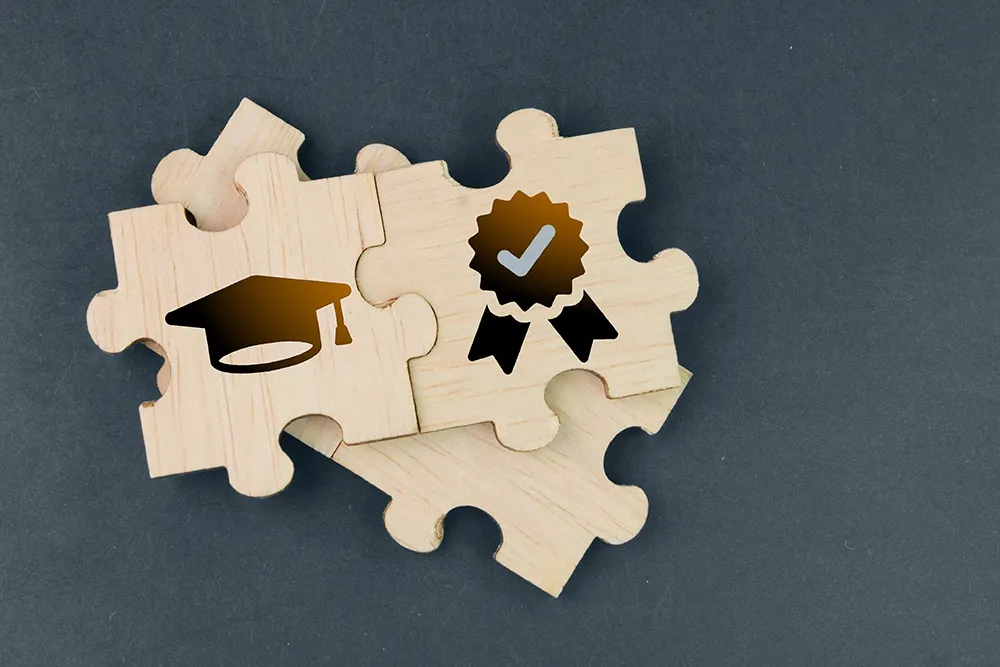The Human Side of Change Effectively
plan and implement
Change Projects with Prosci
plan
Change
Prosci® is based on sound research findings and proven methods and helps you to successfully lead your employees through change processes. 🦋 With the ADKAR® model as part of Prosci®, you can focus even more on individual employees and their individual goals, wishes, values and interests.
What is Prosci®?
The term “Prosci” consists of the first letters of “professional” and “science”.
It is an internationally recognized methodology for change management being developed to support companies in the implementation and establishment of change initiatives. Prosci® focuses on the human side of change.
The Prosci® Methodology is based on reliable Research Results
Today’s Prosci® methodology is based on a study conducted by the entrepreneur Jeff Hiatt and his organization carrying the same name. His aim was to find out why some change projects in companies were more successful than others.
He realized that the employees who implement the changes play an essential role in the success of the projects. No matter how good the technologies used are and how perfectly the projects are structured - if the employees reject the change, the desired success will not be achieved.

Prosci® consists of three Core Components
If you take a closer look at the Prosci® methodology, you will come across these three components: the Prosci® ADKAR Model, the Prosci® 3-Phase Process and the Prosci® Change Triangle. What is it all about in detail?
1. Prosci ADKAR® Model
Let’s start with the ADKAR® model. Using this model, changes in the company can be implemented as bottom-up processes. The bottom-up approach is about the involvement of all employees, their ideas and their perception of the company in order to make decisions “from the bottom up”.
From Awareness to Ability - the 5 Steps of the ADKAR® Model
“ADKAR” stands for Awareness, Desire, Knowledge, Ability and Reinforcement. The model focuses on the psychological and emotional aspects of change and accompanies individual employees from the current to the target state. It assumes that there are five steps that they will go through during the change process.

Awareness
The first step is to create awareness that the change is necessary. The employees need to understand why the change is happening and what impact it will have on them personally. This includes communicating the reasons for the change, the benefits and the possible consequences if the change is not accepted.
Desire
The aim of the second step is to develop a personal desire for change. Employees must have the desire to support and actively participate in the change. This includes building the necessary motivation and a connection between the change and individual goals, values and interests. Questions that should be answered in this step:
- To what extent does the change help the company as a whole?
- How can I help shape the change?
- What’s in it for me?
Knowledge
If you have the will to implement a change but don’t know how to do it, it’s incredibly frustrating, isn’t it? In the third step, employees should therefore acquire the necessary knowledge for the change.
They need to understand how change is implemented, what steps are required and what role they play in it. This includes providing training, training materials and information so that employees are able to build the knowledge.
Ability
The next step is about developing the skills to implement the change. Employees must be able to apply the knowledge and skills they have learned and act effectively in the new environment. This requires practical exercises, coaching and support.
Reinforcement
In most cases, the first positive effects appear after a short time - the employees begin to trust the change. However, this assumed certainty can also quickly change when the thought “It’s working!” sets in. At this point effort to systematic communication is often diminishing. And that can be the downfall of your project.
According to a study by University College London, it can take between 18 and 254 days for a change to become a new habit. On average, it takes another 66 days for employees to fully internalize this habit. During this transition period, there is a risk that the team will revert to old habits. It is therefore very important to maintain communication at all stages.
Reinforcement ensures that the change is positively anchored so that it is clear: There is no exit - i.e. no way back.
Your employees must realize that the change has been successful. It is essential that the progress is recognized and rewarded, that milestones are celebrated and that an environment is created that supports the change in the long term.
From A to R - without taking a Shortcut!
Important: The individual steps must be completed in the order listed (from Awareness to Reinforcement). It makes little sense to train your employees on how to implement changes or to celebrate changes if the employees do not yet have the desire to realize the change.
You need to re-examine and re-evaluate the approach again and again in order to avoid resistance or to be able to react to it. In some cases, for example, it may be necessary to adapt the existing communication concept.
2. 3-phase Process
The Prosci® change process consists of three main phases: the preparation, implementation and reinforcement of change. Each phase contains specific activities and tools to make the change process effective.
The preparation phase is about creating the basis for a successful change process. This includes forming a change management team, which is responsible for the planning and implementation of the change project. Clear communication strategies should also be developed. It is important to identify the stakeholders who will be affected by the change and to take their needs and wishes into account.
The second phase involves the practical implementation of the change. This is where the plans from the preparation phase are put into practice.
The third phase focuses on anchoring the change in the long term and ensuring that it becomes part of the corporate culture.
3. Prosci® Change Triangle (PCT Model)
The Prosci® Change Triangle - also known as the PCT model - is also one of the two fundamental models of the Prosci® methodology. It describes the three pillars of a successful change initiative, which, figuratively speaking, carry the success: Leadership/Sponsorship, Project Management and Change Management.

The management (CEO or the change managers) initiates and directs the change. They are responsible for ensuring that the measures taken are in line with the company’s values.
The project management is responsible for the technical side of the change. It ensures that the appropriate technologies are provided - considering the time and financial budget as well as the scope of the project.
Change management focuses on the employees and guides them through the change.
At the center of the model, there is the success. Imagine the whole construct as a bar stool: the three pillars form the legs, the success is formed by the seat. Only if all three pillars are strong enough they will be able to safely support success. If one of them starts to wobble, there is a risk that the stool will no longer stand securely. If this is the case, the stool must be readjusted!
Using Prosci® to successfully design Change Initiatives
Prosci® is a valuable tool for companies to effectively implement changes such as digital transformation. It offers you a structured approach, promotes understanding of the change process and puts a strong focus on employees. By using Prosci®, companies can make their change initiatives more successful and increase their competitiveness.
Prosci®: registered Trademark
It is important to note that Prosci® is a registered trademark and requires specific training and certification to realize its full potential. There are Prosci® certified trainers and consultants (Prosci® Change Management practitioners), who can help organizations apply the Prosci® model.
Certified Change Management Practitioners work at AGOLUTION
You would like to implement major changes in your company and need expert support and a structured process model? Please feel free to contact us for Prosci®!
More information
on the topic Prosci
on the


 Implementing Changes successfully
Implementing Changes successfully


